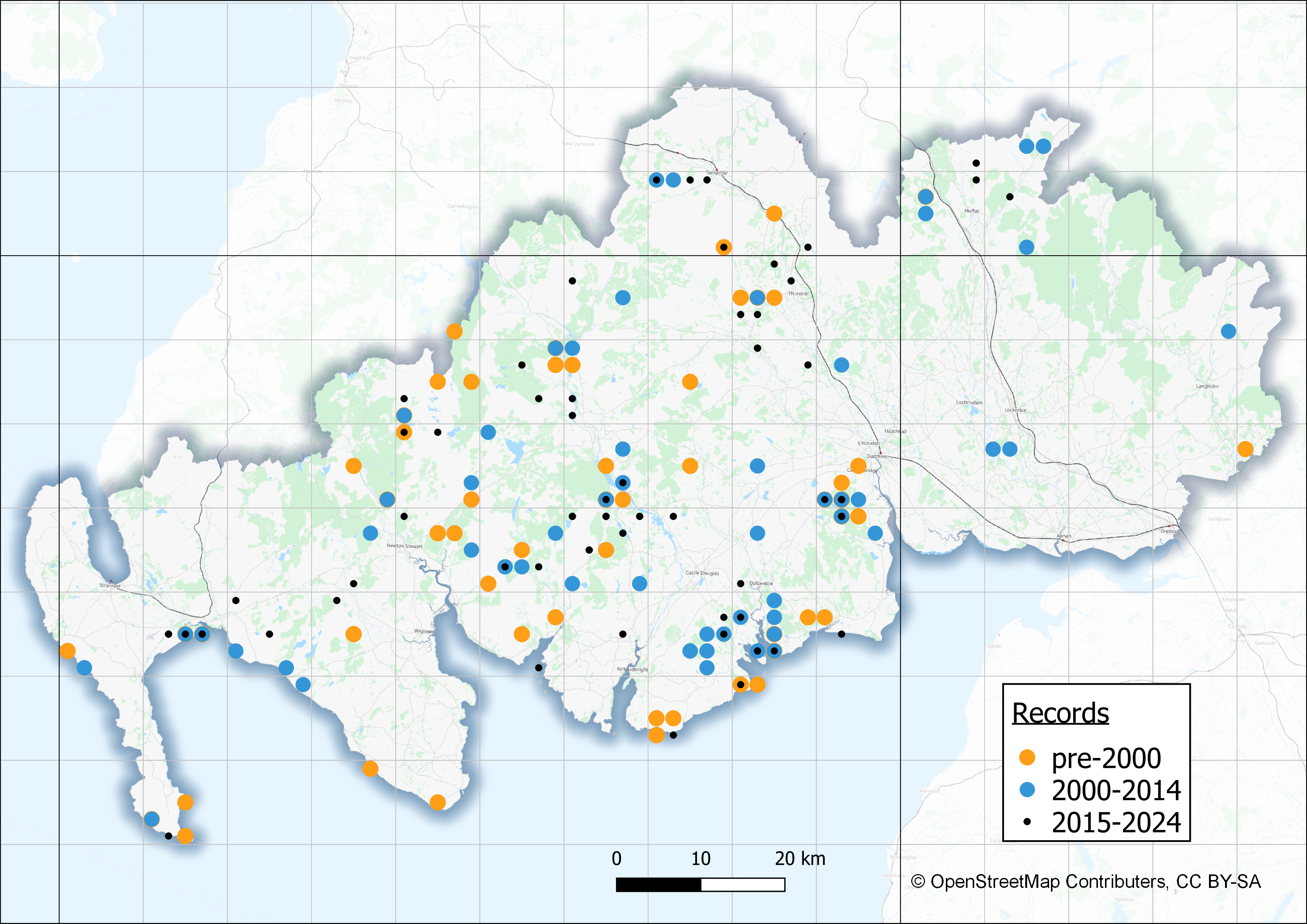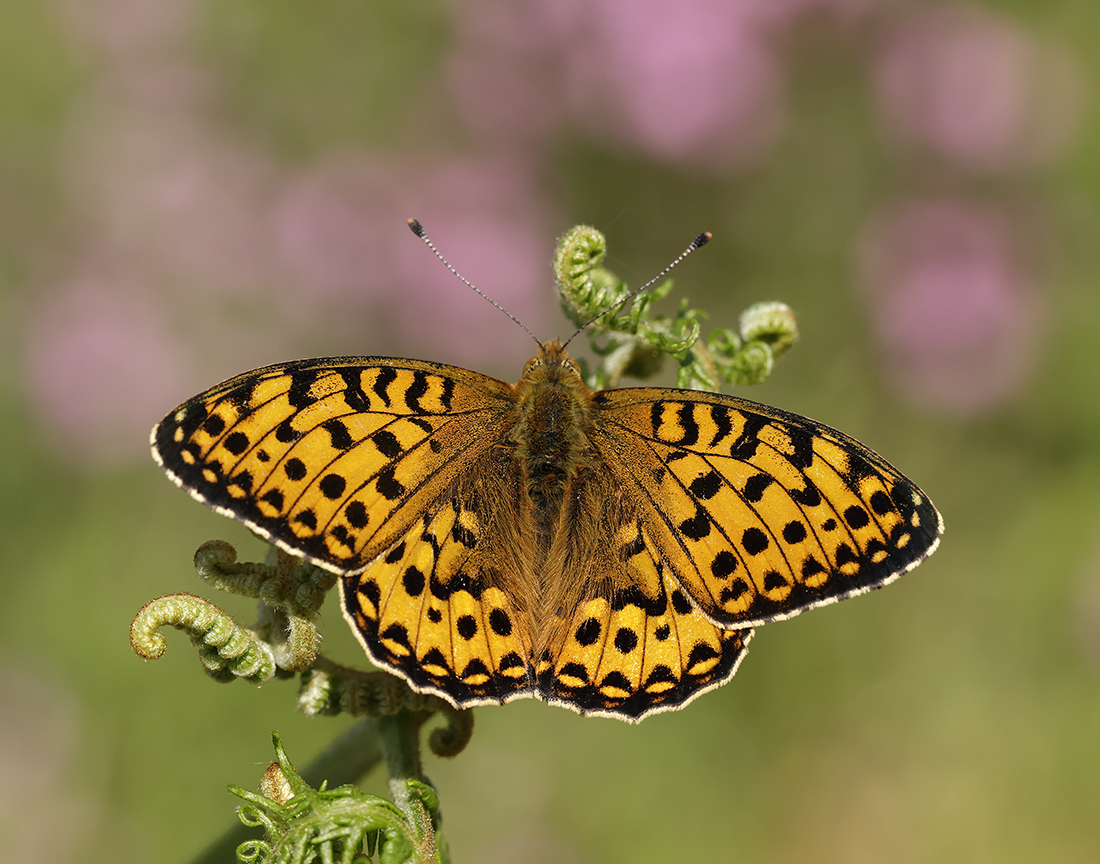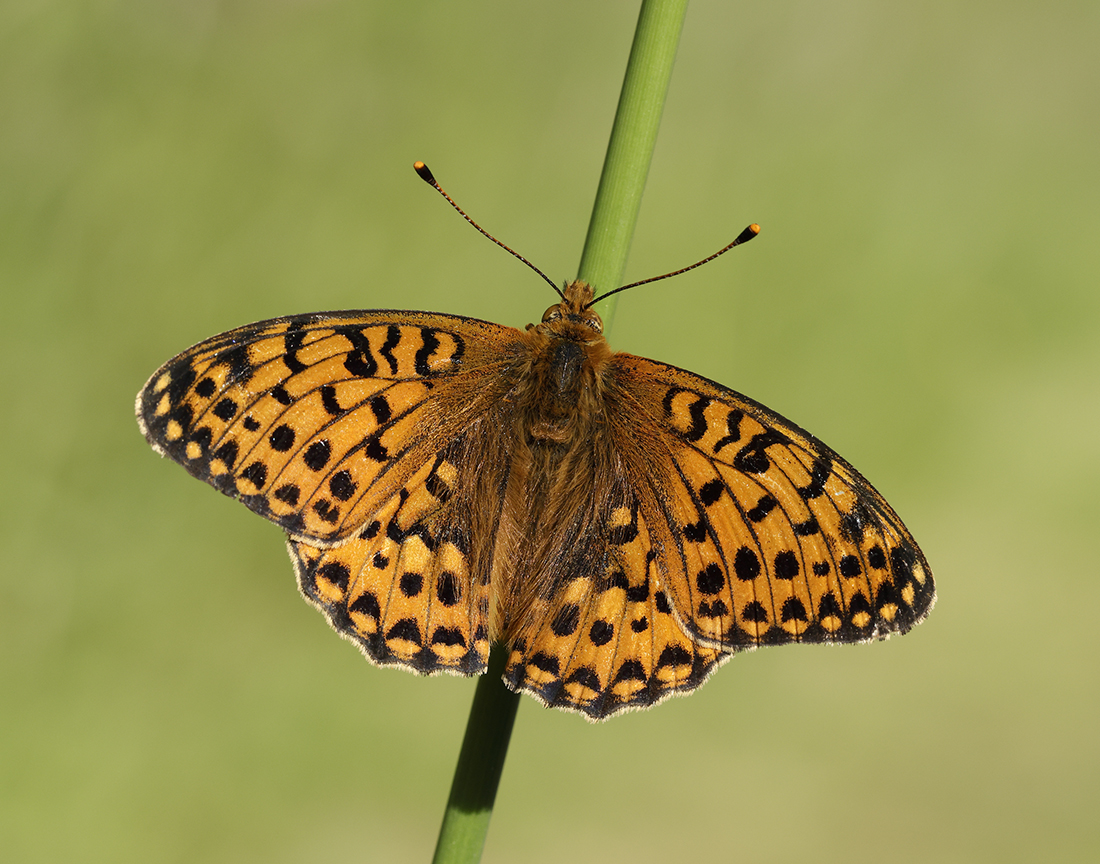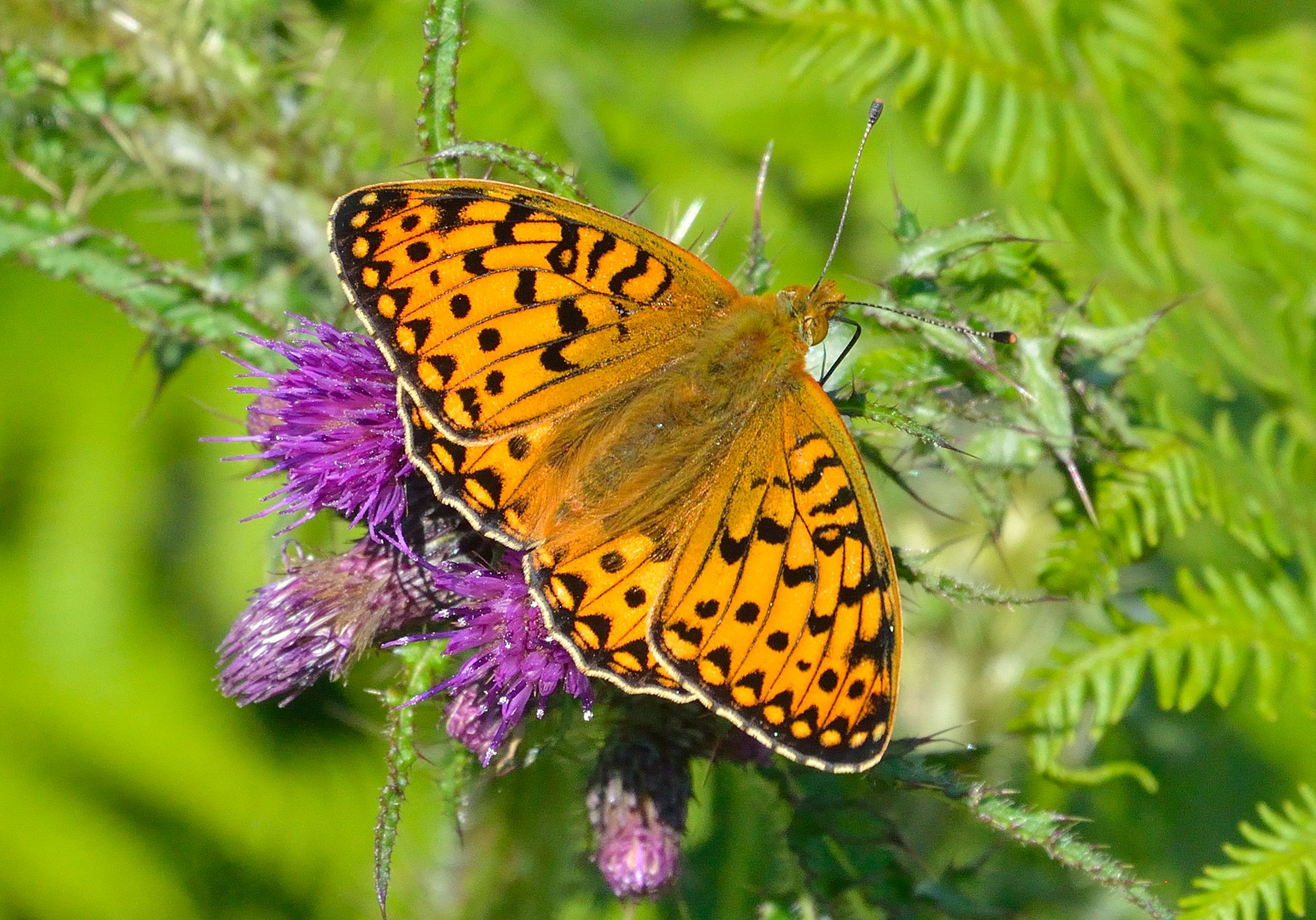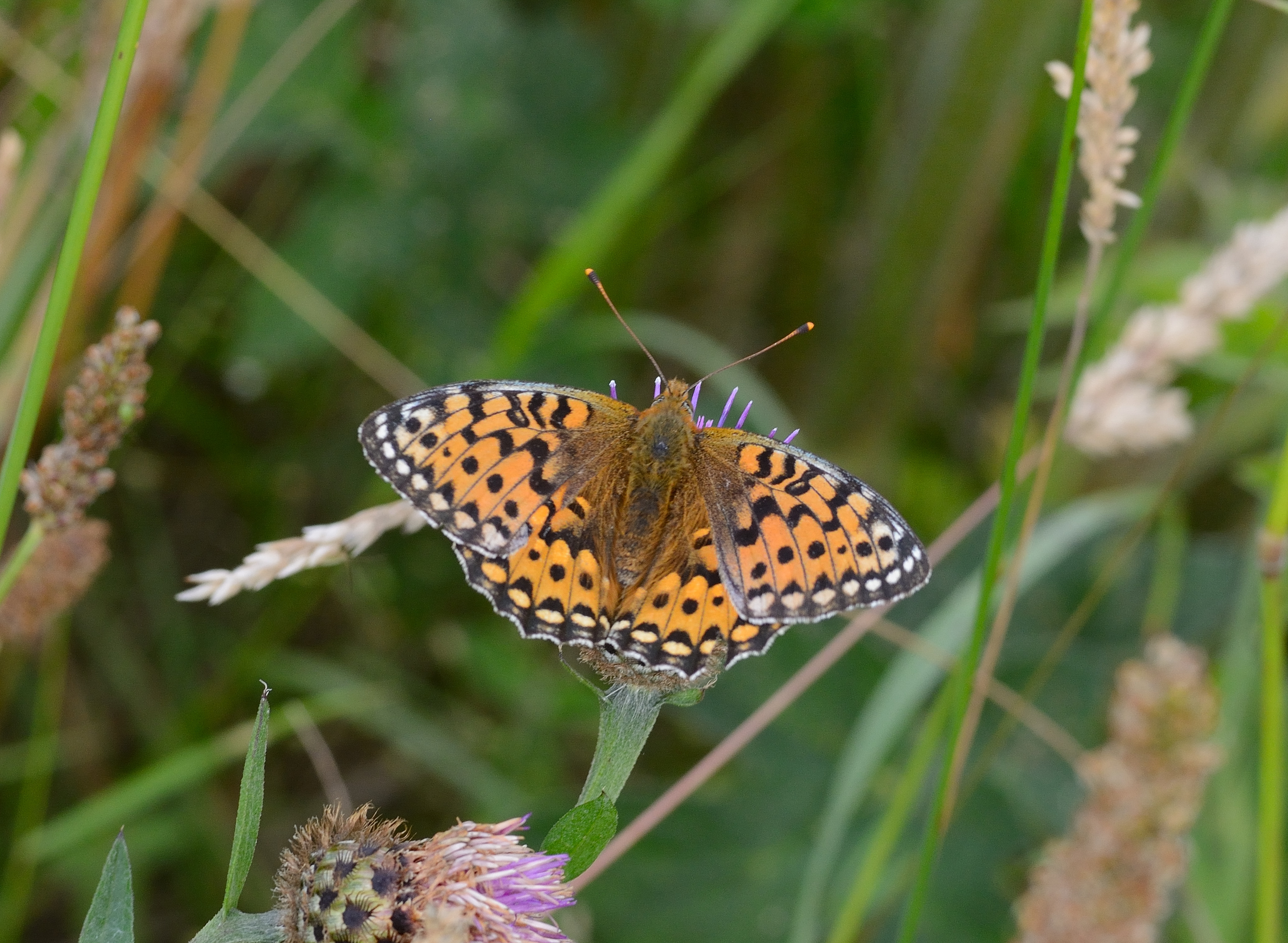The Dark Green Fritillary is found in most parts of the region but there is a lack of recent records east of Dumfries.
In Scotland the butterfly had a particularly good year in 2019, and at Mabie Forest it has been seen in good numbers between 2018 and 2023.
Identification
A large, orange, fast-flying butterfly in midsummer is most likely to be a Dark Green Fritillary. Its name comes from the lovely greenish undersides of its hind wings, seen clearly when the butterfly is at rest or taking nectar.
This strikingly beautiful butterfly flies at more or less the same time as the Small Pearl-bordered Fritillary, and often in similar habitats, but it is a much more powerful flier and almost twice the size. The Dark Green Fritillary is almost as widespread as the Small Pearl-bordered Fritillary, but where they do occur together it is usually much less abundant.
Life cycle & flight period
One generation a year, the first adults being usually recorded in early June, perhaps a few days after the Small Pearl-bordered Fritillary, and they can sometimes be seen still flying in early September. The flight period is at its peak in late June/early July.
Overwinters as a caterpillar. The eggs are laid on or near violets, but on hatching the tiny caterpillar eats its eggshell, ignores the violets and goes straight into hibernation. It thus completes virtually all of its growth during the spring, pupating in May.
Larval foodplant
In most habitats the caterpillars feed on Common Dog-violet, but they can use Heath Dog-violet on moorland, and Marsh Violet on damper sites.
Habitats
The Dark Green Fritillary frequents flower-rich habitats including grasslands, coastal habitats, river valleys, open woodland and moorland edges. The butterfly is uncommon where intensive farming predominates.
Favourite nectar plants include Common Knapweed, Marsh Thistle and Devil’s-bit and Field Scabious.

